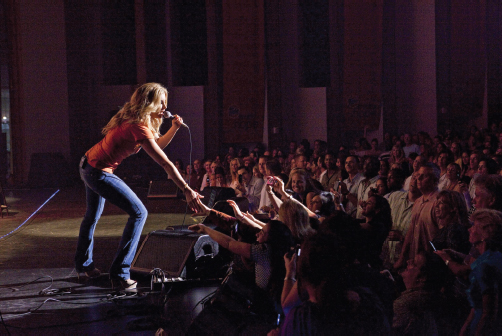The Country Road
Printed Page 148

Country music has attracted enough loyal listeners in its various forms to survive as a profitable sector of the recording industry since the early days of pop music. Though the many styles of country represent significant variations in the development of this musical form, they all share one element: the country voice, inflected by a twang or drawl. In the late 1950s, the wilder honky-tonk sounds of country were tamed by a smoother style inspired by the mellower songs of Elvis Presley. Replacing the fiddles, electric guitars, and nasal vocals of honky-tonk with symphonic strings, pitch-perfect background vocalists, and crooning stars like Jim Reeves and Patsy Cline, the emergent style would become known as the “Nashville Sound.” This laid-back and toned-down form of country music reigned throughout the 1960s.6 In the 1970s, some singers and producers aimed for more mainstream acceptance. Lynn Anderson (“I Never Promised You a Rose Garden”), Charlie Pride (“Behind Closed Doors”), and Marie Osmond (“Paper Roses”) belted out hits that made the country idiom well liked in suburban America.7 By the late 1970s, this movement had spawned “pop country,” a form dedicated to generating hits that would score on both the pop and country charts, launching the careers of superstars Glen Campbell, John Denver, and Kenny Rogers. However, the genre would not peak until the 1990s when “New Country” attracted fresh throngs of fans. In 1989, Clint Black perfected the New Country sound in his Killin’ Time album, and in 1992 Billy Ray Cyrus followed up Black’s triumph with the massive hit “Achy Breaky Heart.” Shania Twain and Faith Hill went on to sell platinum country albums in the 1990s—but Garth Brooks would be the star to break sales and concert attendance records during the decade, establishing a huge country market for years to come.